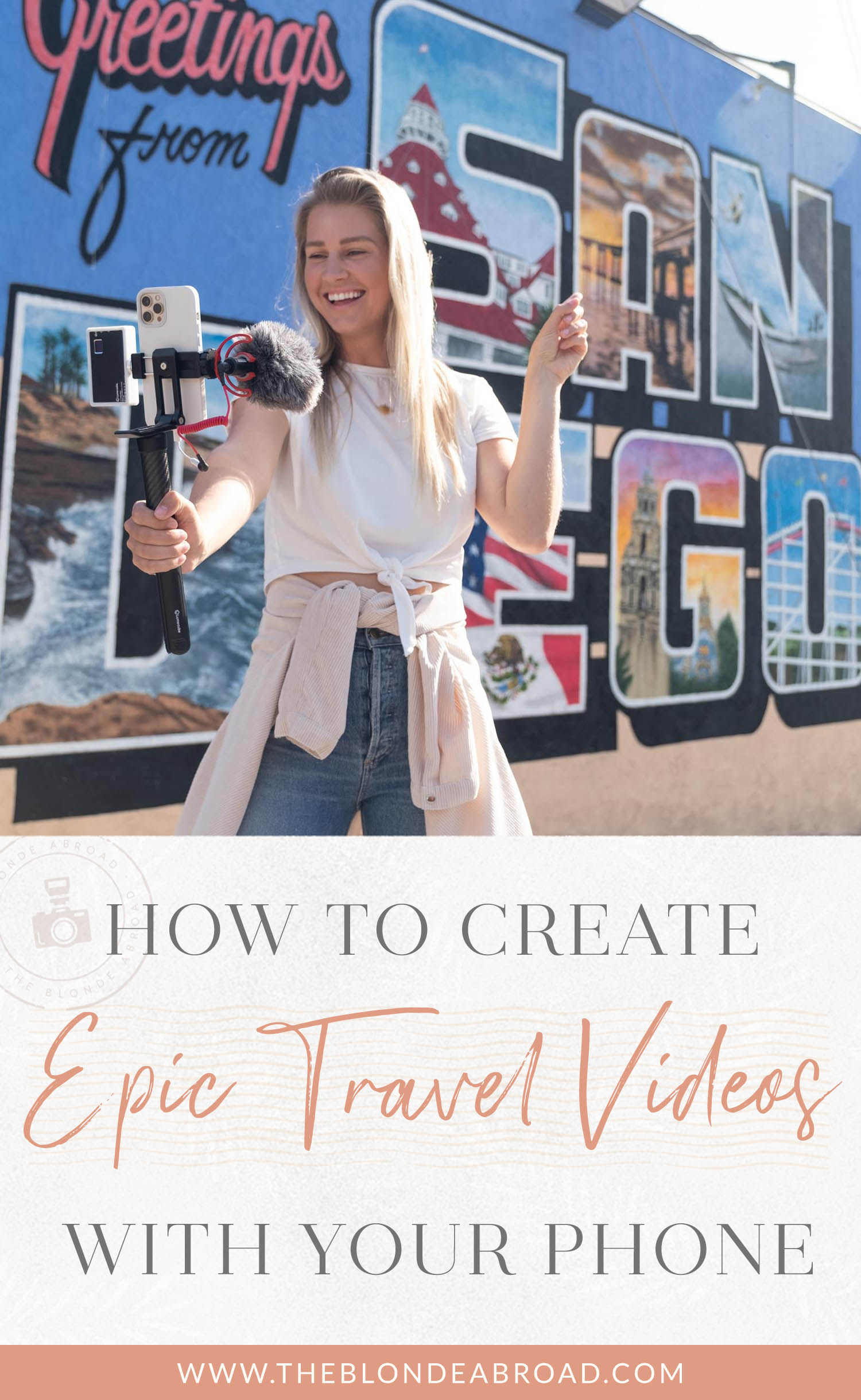
Have you ever thought to yourself, “I wish I could create a cool travel video…” But it seems, well, intimidating?
I know that using a DSLR camera can be tough (just check out my Beginner’s Guide to Shooting in Manual Mode), and cameras can be quite weighty to lug around all day.
I’ve been creating travel videos for nearly 10 years and, while I believe everyone can learn photography, shooting video with a DSLR comes with a bit of a learning curve.
But, what if I told you that you can easily create spectacular travel videos using just your phone?
More often than not, I actually prefer to shoot video with my phone, as it’s much more compact and easier to “get the shot” at a moment’s notice.
If you’re thinking to yourself, “But what about the quality?” There are a few tricks of the trade that will elevate the footage you take.
Here’s how to create epic travel videos with your phone!
My Smartphone Video Equipment
Your gear doesn’t have to be super bulky to get incredible shots. You may have to keep reminding yourself of this, but there are so many cool things you can create with your phone.
Here’s the rundown of my gear:
For On-the-Go Travel Videos
- iPhone 12 Pro Max
- Mobile Creator Lighting & Audio Kit by Lume Cube — Panel Mini, Softening Diffuser, Creator Stand, Rode Mic
- 3.5mm Headphone Jack Adapter
- Lighting Kit for GoPro and Action Cams
I love that it’s a full professional setup that’s compact enough to fit in a large handbag while I’m traveling!
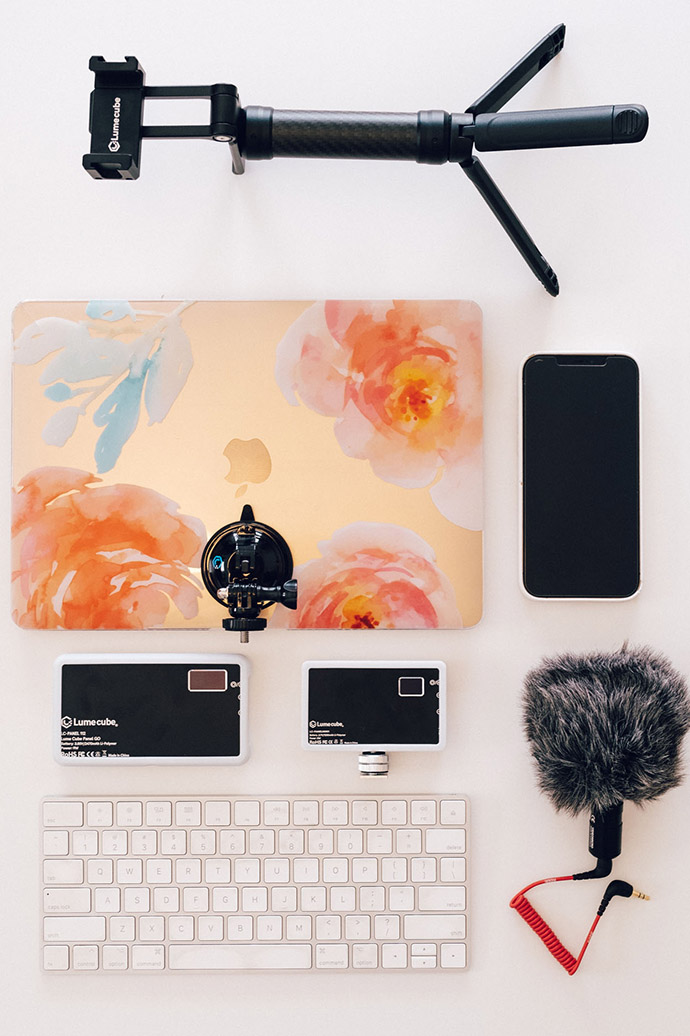
The Lume Cube Panel Mini is an LED panel that acts as a fill light; its frosted lens provides diffused light to make you glow.
You can change the temperature of the light for cooler or warmer tones. Plus, you can adjust the brightness. Lighting can make or break your footage, so it’s super important!
As an added bonus, it’s about the size of a credit card, so no bulky lighting rigs necessary.
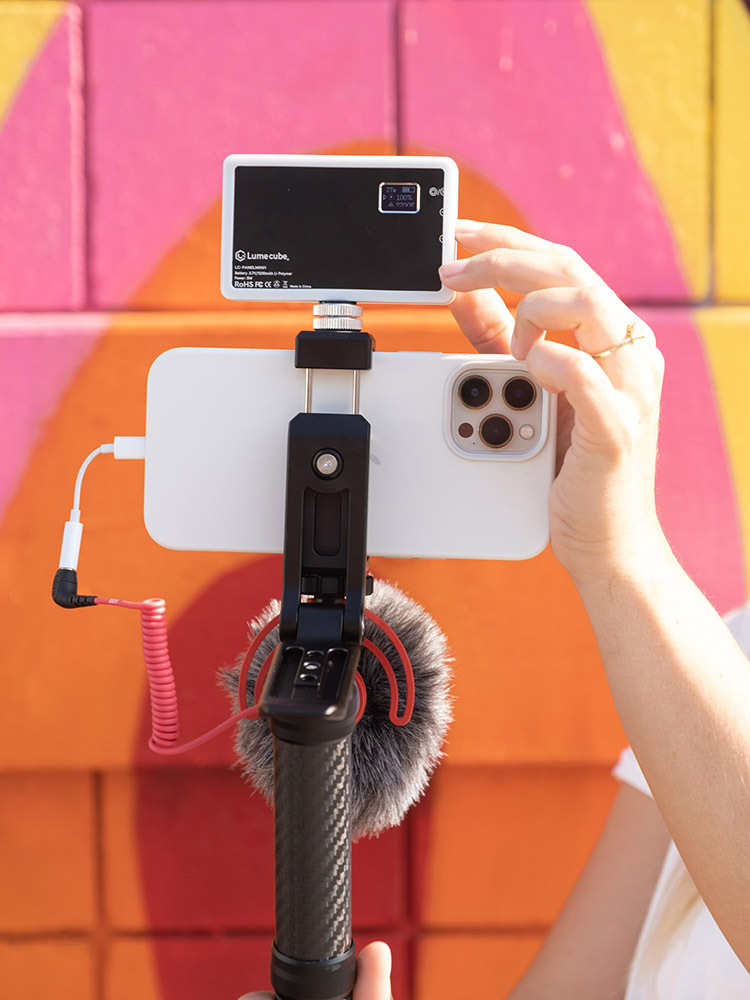
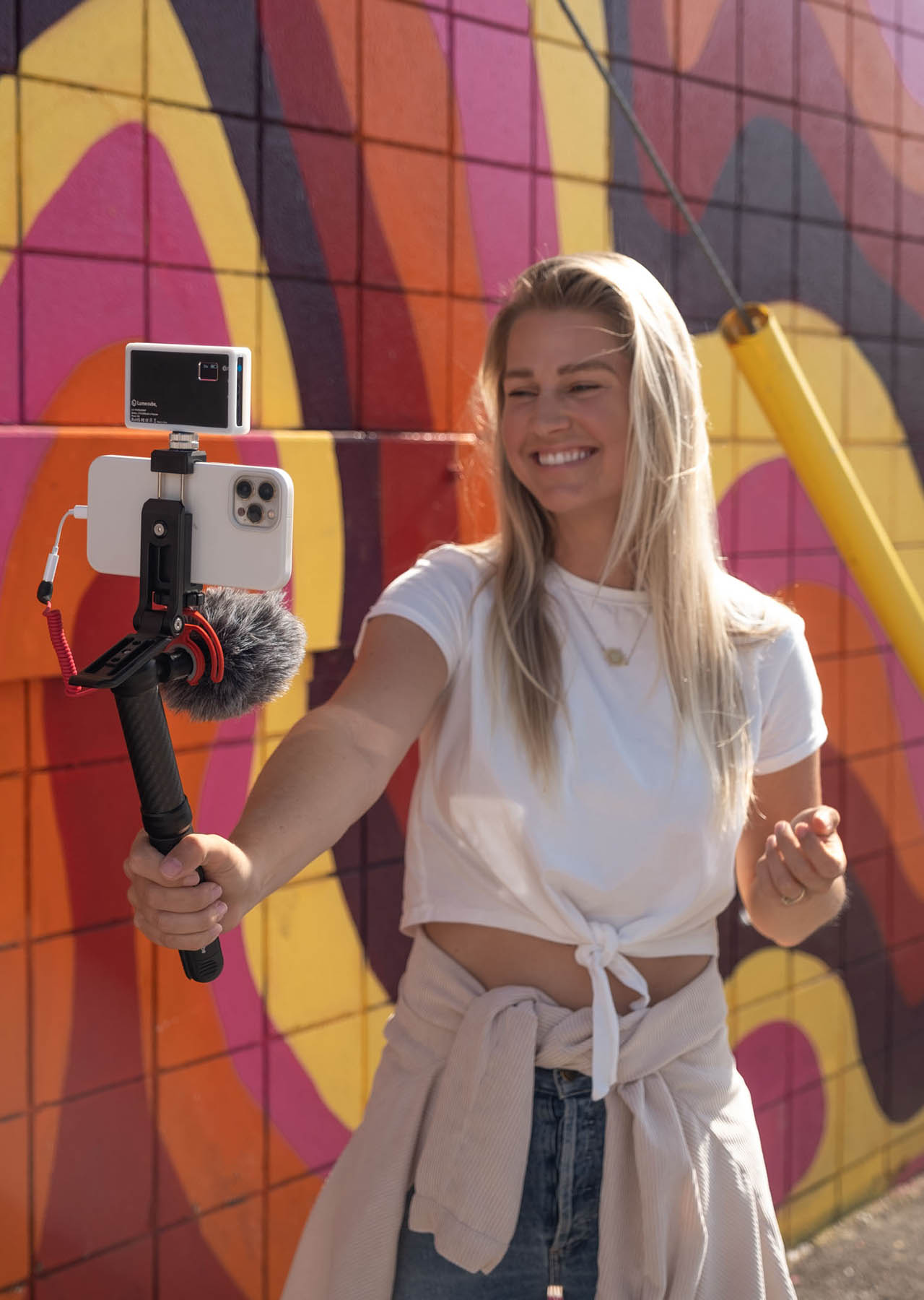
Get the Most Out of Your Gear
To get the most out of your gear, you have to understand what it can do!
Whether you have an iPhone or an Android, I would highly recommend watching a tutorial or two on YouTube to explain all the features and how to use them.
I currently have the iPhone 12 Pro Max and it has so many different settings for video — I can change my frames per second (meaning I can create fantastic slo-mo shots), I can change the quality I’m shooting at, take time-lapses, and more!
Regardless of what phone you’re shooting with, using a tripod — like the Mobile Creator Stand (which also acts as a selfie stick) — will give you better stabilization than holding by hand.
Some things to keep in mind:
- Always make sure to lock your exposure (AE/AF)
- Shoot in 4k if possible
- 24 Frames Per Second (FPS) is the standard for cinematic quality
- 60 FPS for Slo-Mo
- 120 or 240 FPS for even slower Slo-Mo
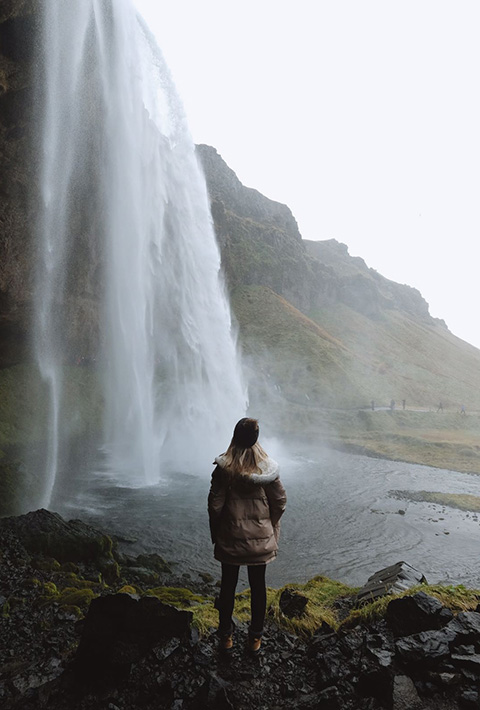
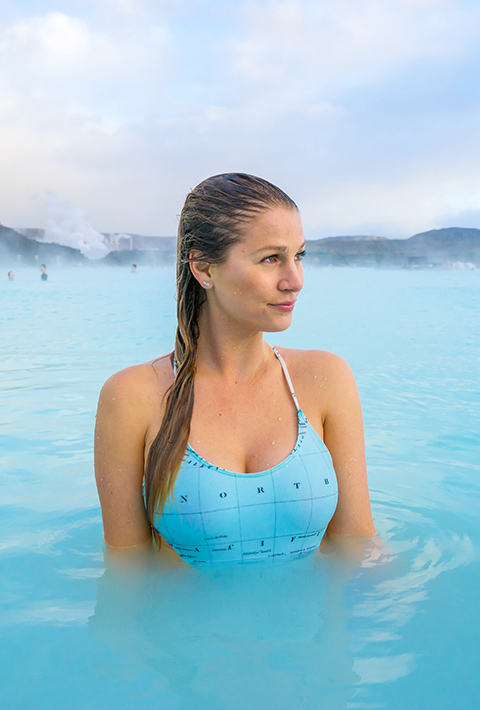
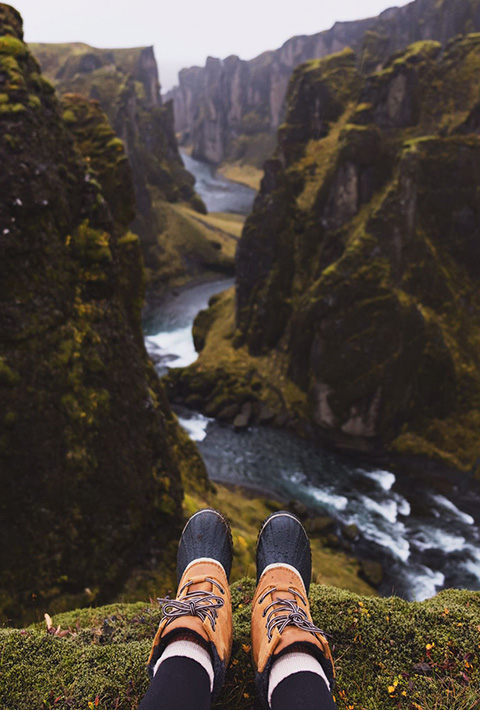
Tips for Planning Out Your Shots
While you might not know exactly what you’ll find as you’re exploring, it’s extremely helpful to go into video creation with specific shots in mind!
By thinking about your end goal before you get to your destination, you’ll be able to embrace it, rather than research and plan when you’re there. No wasting precious time!
My Top Tips for Planning Out a Travel Video
- Create a Pinterest board ahead of time with inspiration for the location and overall vibes
- Consider what kind of travel video you’re making — vlog, cultural immersion, documentary, first-person?
- Figure out what kind of shots you need to tell your story and make sure to mix them up (subjects, landscapes, slow-motion details, etc.)
- Start storyboarding and planning out what shots you’d like at certain locations
- Understand what lighting you’ll be working with
Types of Shots
A good travel video isn’t always just epic drone shots. I love when videos incorporate the little aspects of the journey, from the plane ticket and passports to getting there and all the little details in between.
Here are some different types of shots to add to your storyboard:
- Establishing Shots
- Wide Landscape Shots
- Epic Views
- Action Shots — i.e. trying a new food, pouring a drink, splashing in water
- The In-Between (walking to places, getting there)
- Tight Shots of Details
- Slow Motion
- Commentary/Reaction
Different Types of Videos
This is totally your preference — there’s no right or wrong when it comes to what kind of video format to do and I like to switch it up.
Immersive: With some of my videos, there’s no talking to the camera; it’s entirely immersive, and all about the destination. You explore it through my eyes.
You can see an example of this in my Namibia travel video below:
Limited Narration/Voice Over: This is my own way of describing a travel video where you don’t narrate your experience Vlog-style, but incorporate personal reactions or VO along with landscape shots. I typically do my travel videos like this. I always try to get a few reactions selfie-style, but it’s often very difficult to narrate my entire trip (especially when I’m traveling solo. So, I film like crazy, get some reactions and selfie-style clips whenever possible, and use VO in the editing process to help tell my story.
You can see an example of this in my Galapagos travel video below:
Vlog: I personally do two different styles of “Vlogs:” One with full narration (like the Mexico travel video below) and one with narrative explanations but mostly filled in with travel footage (like the Iceland travel video below). A vlog is when you narrate your experience with you being the central subject to guide the video.
Helpful Tip:
However, a lot of my footage is pretty much just used on Instagram and Instagram Stories — for me, my focus is not as much about YouTube.
Consider where you’ll be uploading your footage and keep that in mind with filming. My suggestion would be to film once tall and once wide for a variety of options if you’re using your videos on both Stories and YouTube.
Video Settings
For Slo-Mo
Depending on what you’re filming you can choose between 60 FPS, 120 FPS, or 240 FPS.
This goes back to storyboarding and understanding what shots you want to get. The higher the FPS (120, 240) — the slower your video will be.
Composition Grid
Turn this on in your camera settings. This will help you with the Rule of Thirds and create balance in your shots.
Formats Most Compatible
When shooting footage on trips, I purposely go with the larger file sizes and click “Formats Most Compatible.” Turn this off after your trip so you’re not taking up storage (mainly with videos of your dog…).
Time-Lapse
If you have the time or interest, you can shoot time-lapse on your phone! Set up your phone on the Mobile Creator Stand and let it run.
Helpful Tip:

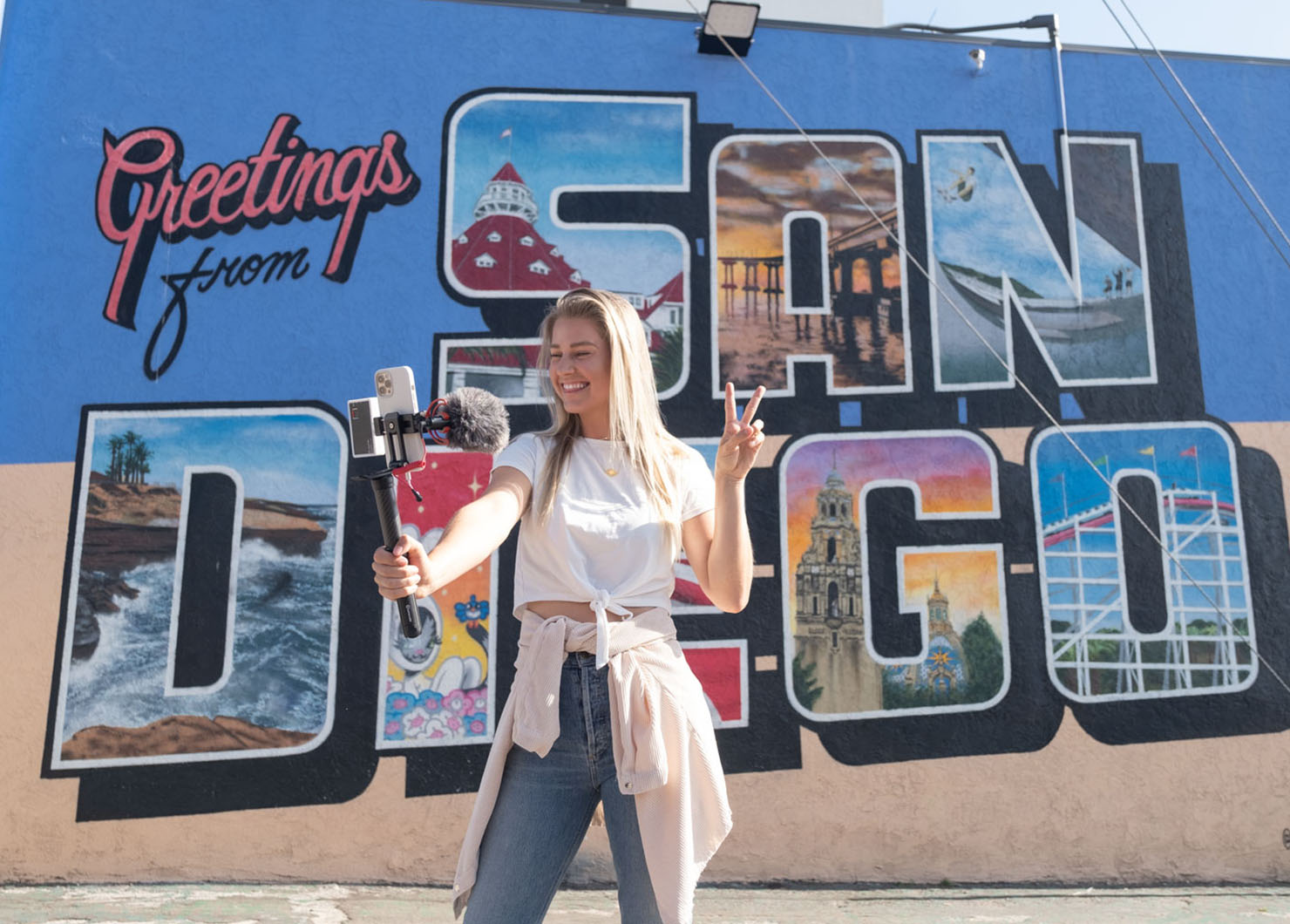
Storage for Video Footage
Storage is crucial! Knock on wood that you don’t lose your phone while traveling…but it happens, and you don’t want to lose all the footage that you’ve just filmed.
Option A: Smart Storage with Google One
Google One has an online storage platform where you get 2 Terabytes for $10 a month. I like that it’s “smart” — so it will upload automatically and you can filter through it pretty easily.
If you don’t want to pay for the subscription after your trip, make sure to load the footage to an external hard drive. But, in my opinion, Google 1 is a great storage solution for on the go.
Option B: Airdrop, Computer, Hard Drive
This is a little more time-consuming, especially when you’re traveling. But you can Airdrop the footage to your computer at the end of the day and put it on a hard drive as a backup.
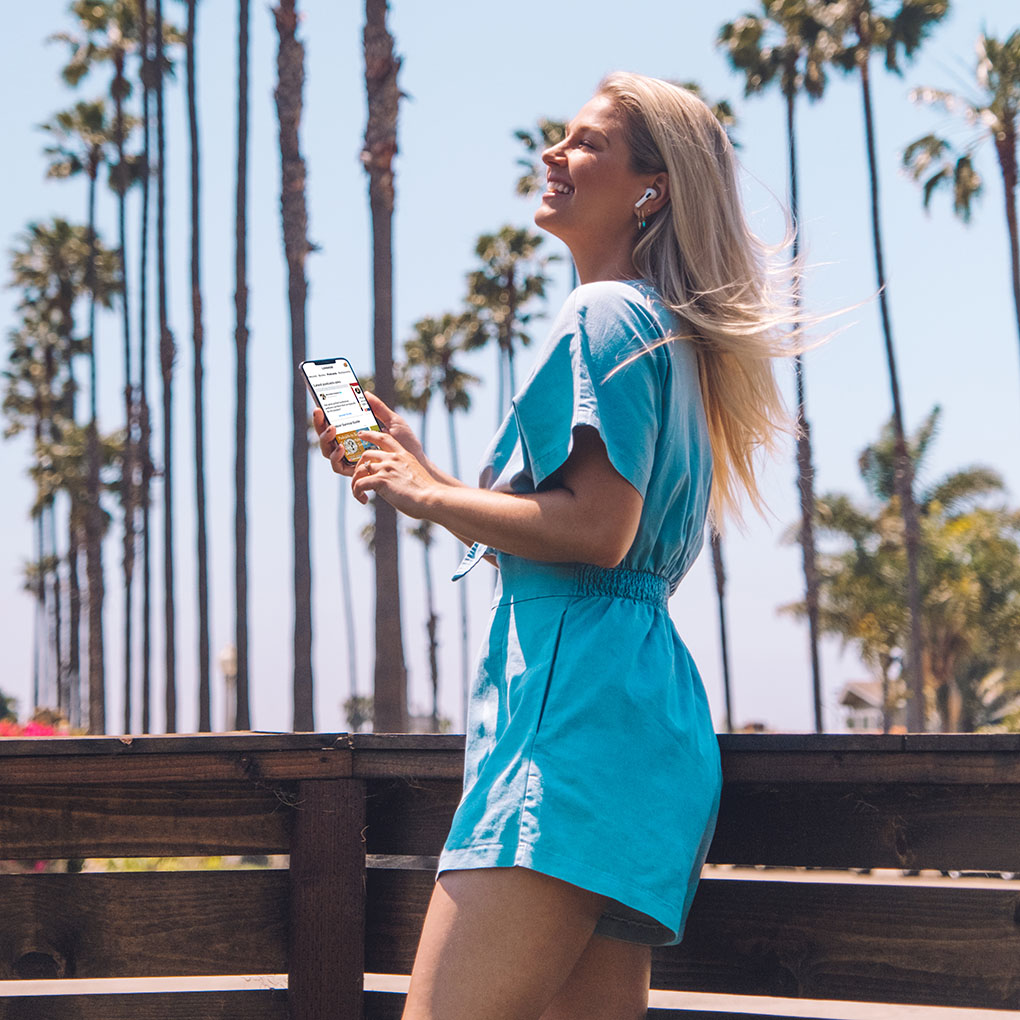

Where to Get Royalty-Free Music
Going into the video, if you have a song in mind, it can help you come up with ideas or transition ideas. But no worries if you don’t know what music you’ll be using — you can figure that out in post.
As a heads up, I’ve never been flagged for music on Instagram, BUT keep in mind that using commercial music (like the stuff you’d heard on the radio) can get your video removed.
Since many people put in hours editing their video to match a beat — I would suggest only using royalty-free music so it doesn’t get removed/you waste your time.
Here are a few platforms to find royalty-free music:
- Premium Beat — 5 tracks per month for $12.99
- Epidemic Sound — It’s a subscription of $15/month, but it has a ton of choices!
- Buy royalty-free music on iTunes and then import it to your editing software
Editing Your Video
Editing your footage and splicing it all together is where the magic happens! It’s also the part that can be the most difficult — depending on what software you’re using.
For Beginners
Quik: GoPro has a pretty great editing app called Quik. You select the clips you want in your video and it will automatically edit them to a beat point (either your song or their selection of royalty-free music).
This works pretty well; the one downside is that it doesn’t do 4k. But if you’re just starting out, check out Quik!
For Medium to Intermediate
Adobe Premiere Rush: If you have a Creative Cloud Membership (for editing photos in Adobe Lightroom), you’ll have access to this. Premiere Rush offers basic features and functionalities for video editing — great for those that have a little handle on how they want to edit, but it doesn’t have as many bells and whistles as the Pro version.
Luma Fusion: This is for iOS only, and unlike Adobe, this one is not a subscription but rather a one-time $30 fee. I haven’t personally used Luma Fusion but the reviews are good!
For Advanced
Adobe Premiere (Desktop): This is what I personally use and it’s the industry standard. There are a lot of bells and whistles and there’s definitely a learning curve, but you can do so many cool things with it.
I would suggest watching as many YouTube tutorials as you can to learn more about all of Adobe Premiere’s functions.
Skillshare has some great courses, too! If you’re interested in Color Grading and delving into nitty-gritty topics when it comes to video editing, check out Skillshare.
Helpful Tip:
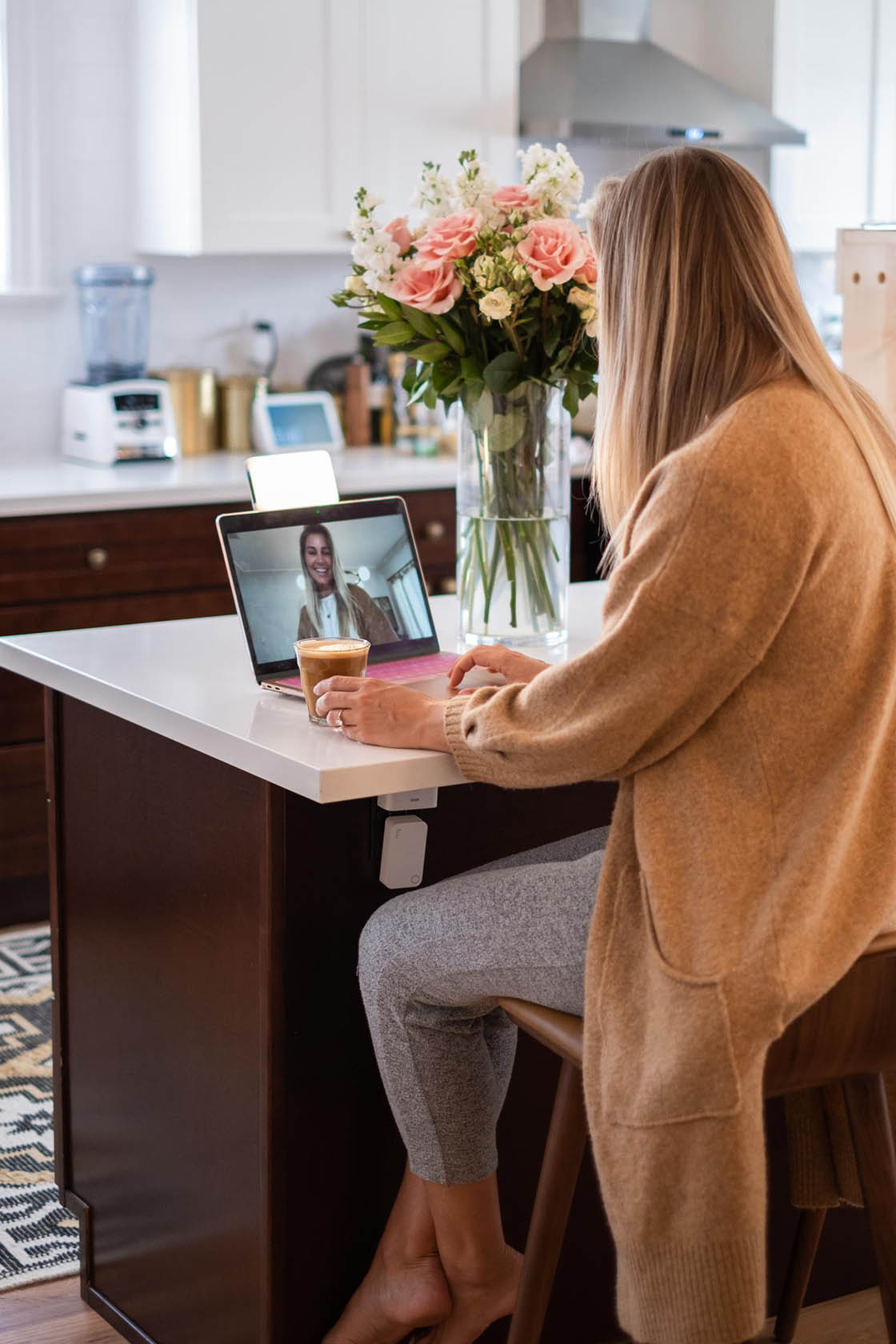
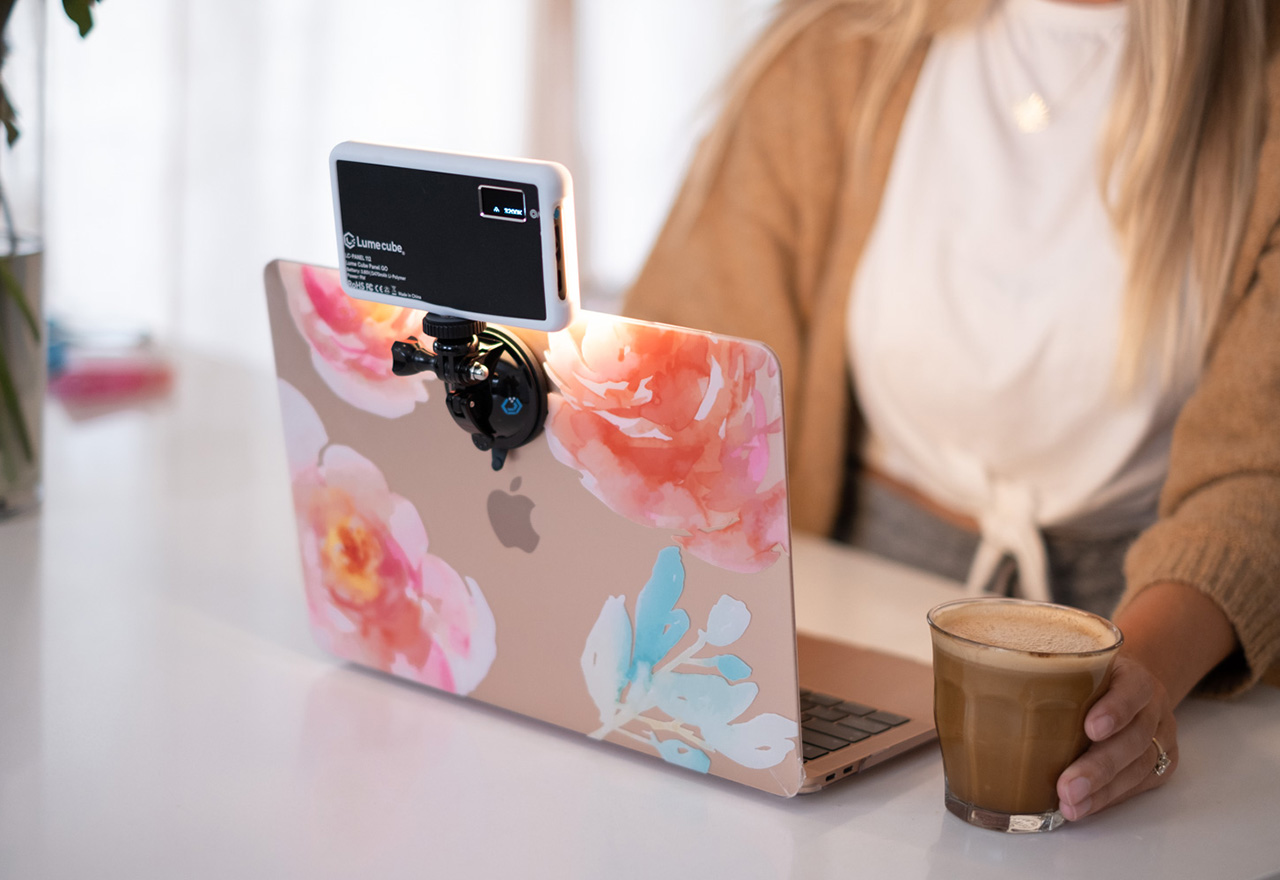

Working From Home
Curious about what my gear is like when I’m not traveling?
When I’m working from home, there are several things I like to use to optimize my videos and content. These pieces are great for taking brand calls and live streaming, as they provide flattering lighting.
Work From Home Gear
- Work From Home Combo Bundle — Broadcast Lighting Kit, Video Conferencing Kit
- DSLR Camera Mount with Light Stand Adapter
- Suction Cup Computer Mount
- Panel GO
T BA Takeaways
- Plan ahead and storyboard
- Figure out your gear beforehand
- Understand which settings are best for what
- Master your lighting
- Stabilize with a tripod/selfie stick
- Get a mix of details and landscape
- Pick out royalty-free music
And there you have it, folks! Those are my top tips for creating epic travel videos — all while shooting with my phone!
Do you have any tips or tricks you’ve learned along the way? I’d love to hear them in the comments below!
This post was sponsored by Lume Cube. As always, all thoughts and opinions expressed in this post are entirely my own.
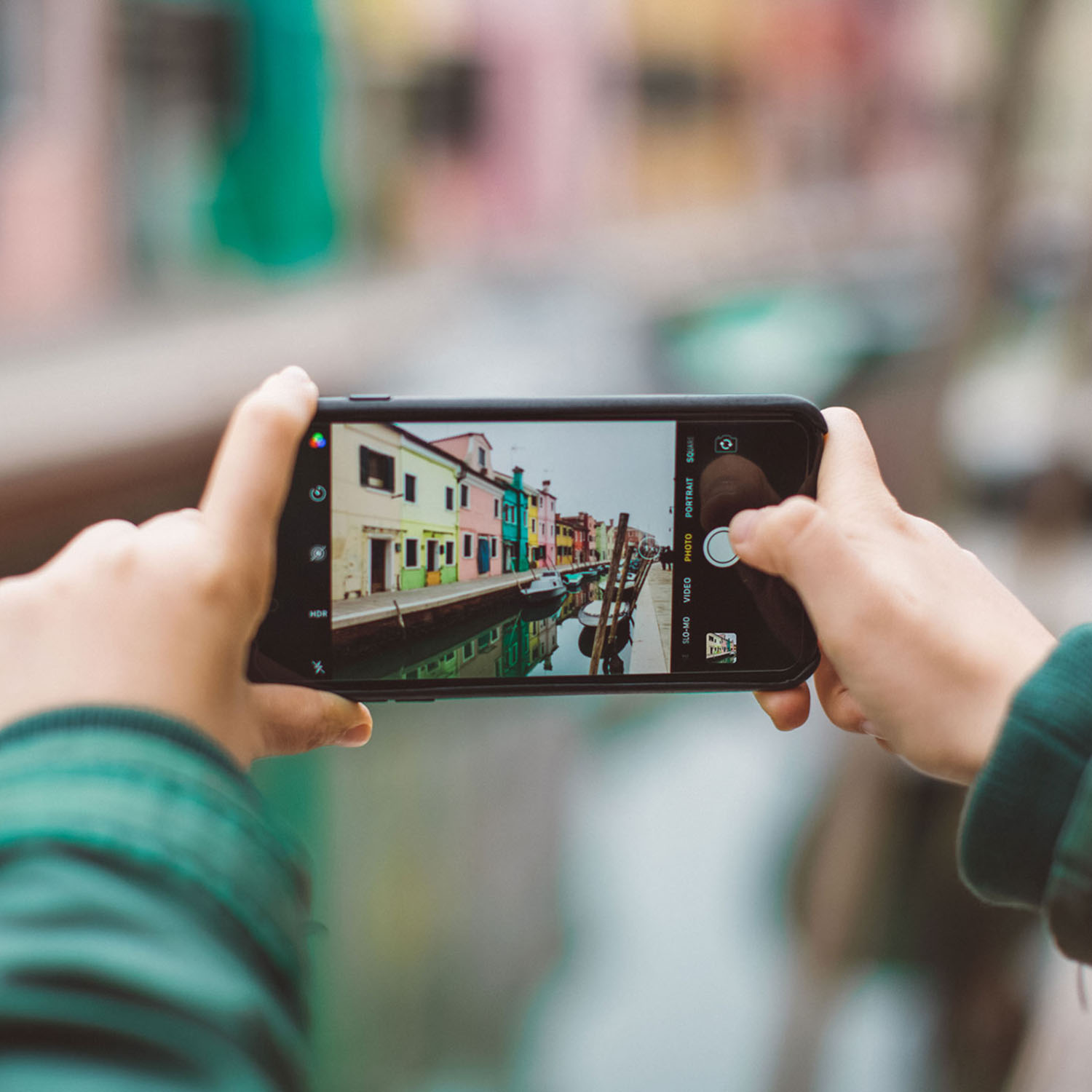
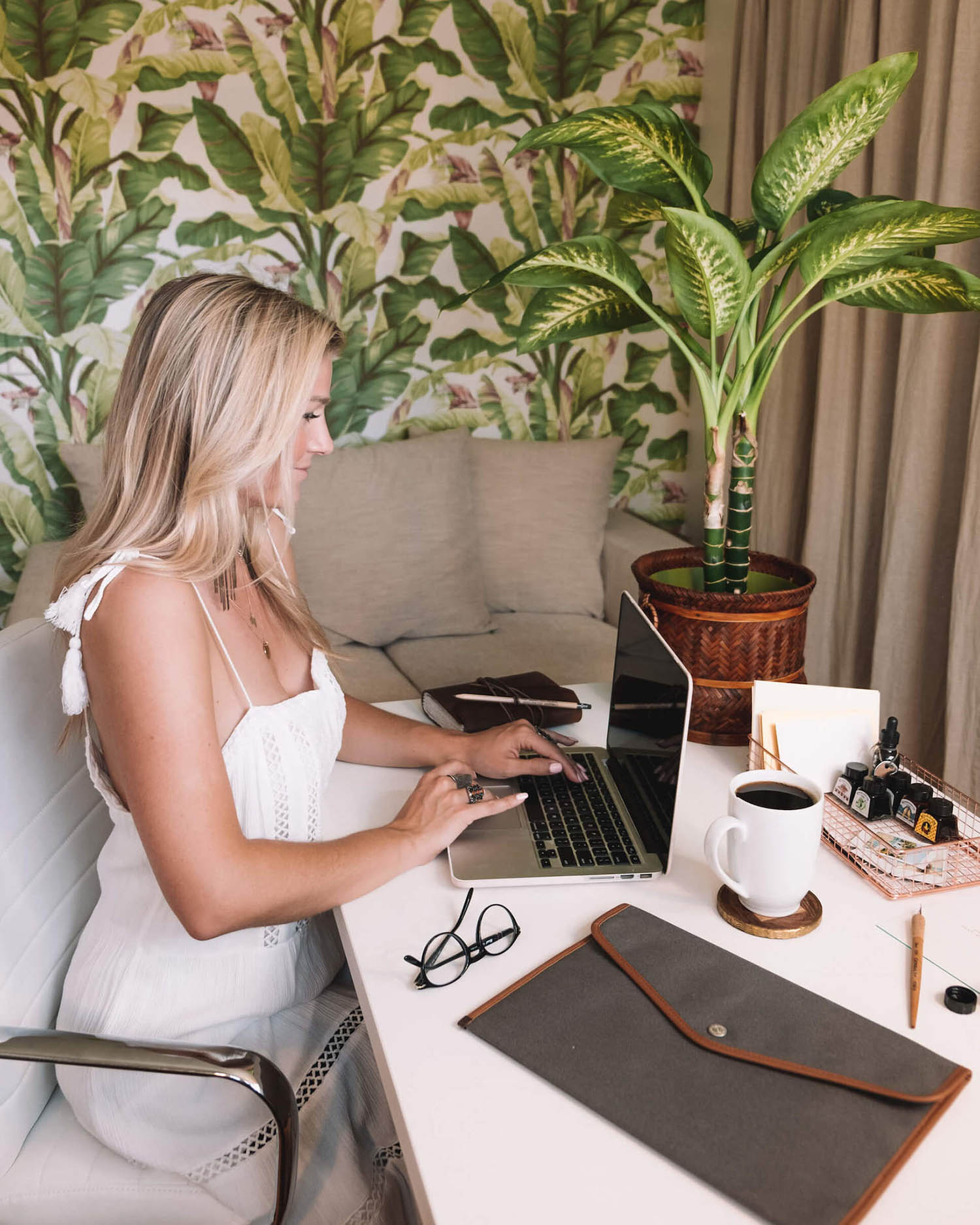
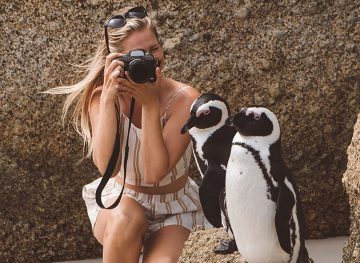
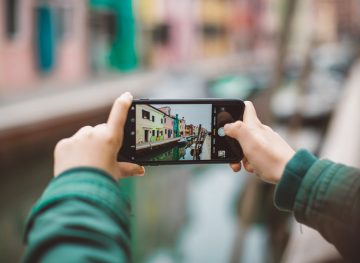

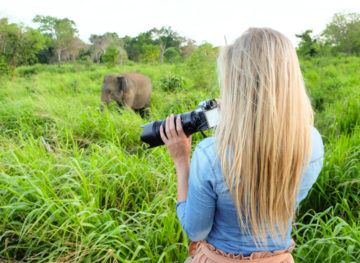
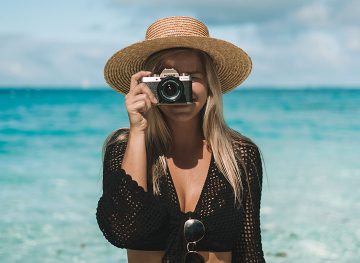
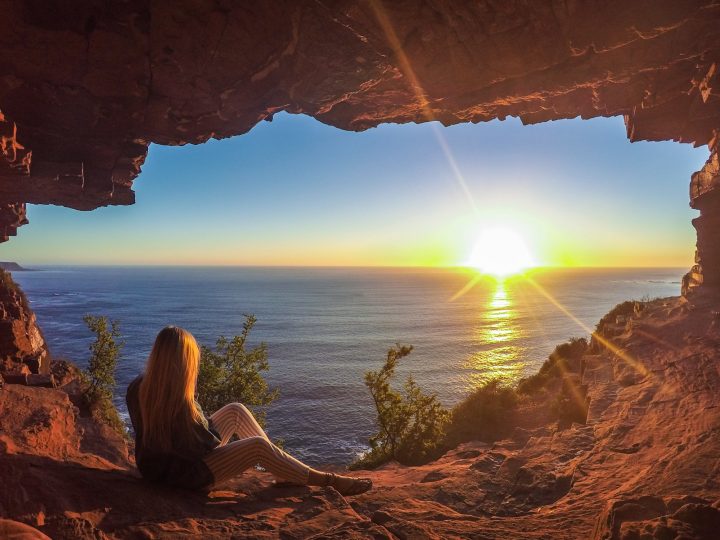




I love this! Thanks for the informative post. I have been working on improving my photography and want to take it to the next level of making videos. I plan on practicing some techniques before my next trip.
Hi Donna! I’m glad to hear it 🙂 Let me know how you go with the tips and if you learn anything else along the way!
Awesome tips. We have some fun vacations planned for the summer and have always wanted a video or two to remember them but always thought I had to lug around a fancy camera – now I can do it with my phone. Thanks!
Hi Kate! 🙂 I’m glad you found this post!